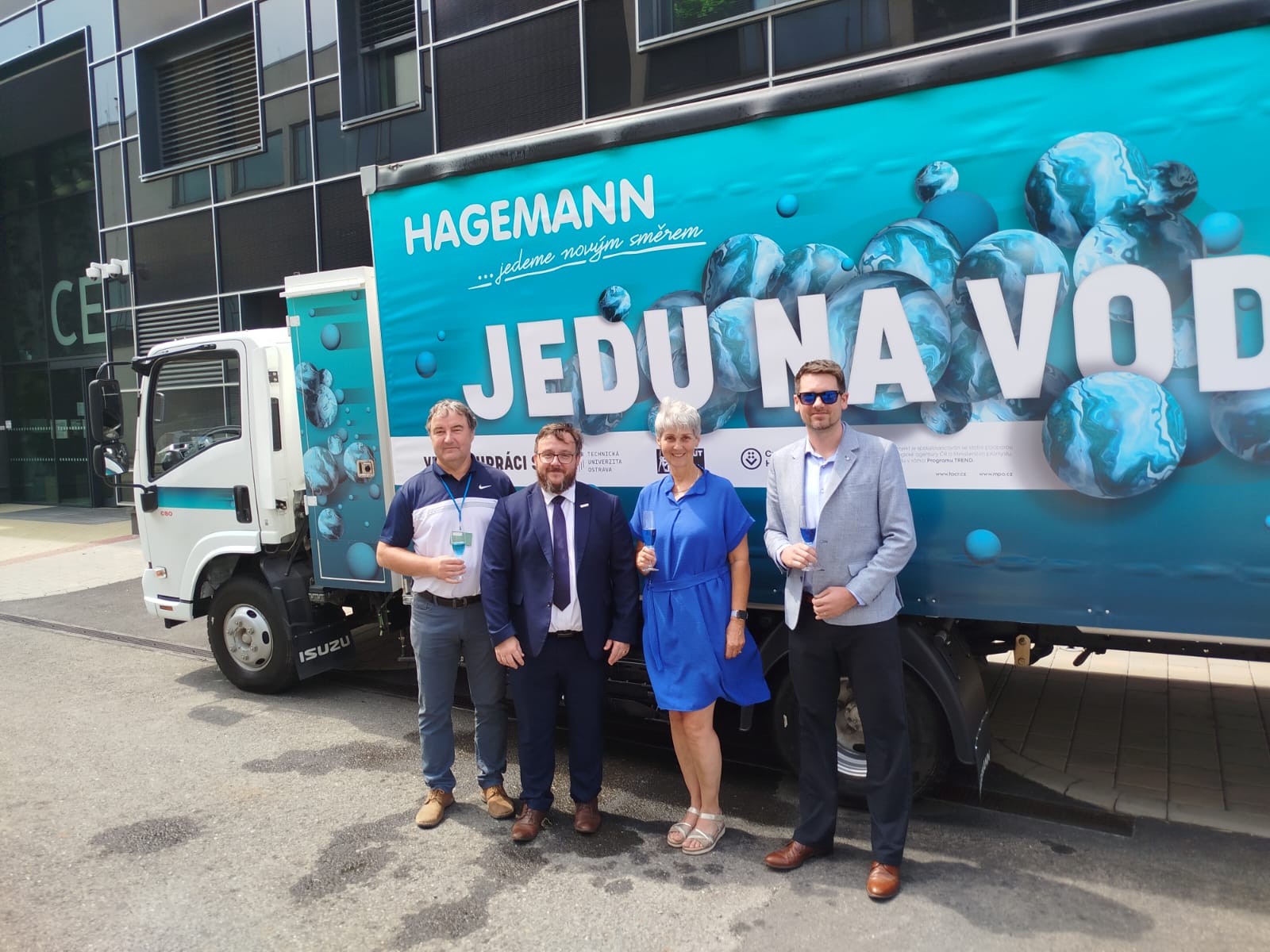HAGEMANN Becomes a Leader in Hydrogen Transport: Debut of a Hydrogen-Powered Truck in Ostrava

The Moravian-Silesian Region once again confirms its key role in the development of hydrogen technologies. The first Czech hydrogen-powered truck was christened by the Governor of the Region at a ceremony organised by the Moravian-Silesian Hydrogen Cluster.
For the first time in the Czech Republic, a category N1 vehicle with a hydrogen fuel cell has been put into operation. This milestone project is a collaboration between the company HAGEMANN, the VSB – Technical University of Ostrava, and the Czech Technical University in Prague.
A significant step in the field of zero-emission transport was ceremonially completed today at the Centre for Energy and Environmental Technologies (CEET) of VSB-TUO. In the presence of representatives from the regional government, academia, and the private sector, the first Czech category N1 truck powered by a hydrogen fuel cell was christened, fueled, and officially put into operation. The joint ESO project, led by the Opava-based automotive company HAGEMANN and researchers from CEET, VSB-TUO, and CTU, was funded by the Technology Agency of the Czech Republic.
The event was held under the auspices of the Governor of the Moravian-Silesian Region, who sees hydrogen technology as a promising area of innovation, long supported by the region. "Hydrogen is strategically important for our region. It is not only a path to cleaner air but also to transforming and modernising our economy. The Moravian-Silesian Region is one of the leaders in this field, and the development of the truck proves it," said Josef Bělica, Governor of the Moravian-Silesian Region.
The hydrogen vehicle has great potential in the application of alternative drives, particularly in urban and suburban logistics. It can be used by municipal services, waste collection operators, local transporters, and delivery services. With this project, HAGEMANN confirms its ability to respond to current challenges in modern transport and to further develop its engineering and manufacturing expertise. "The newly christened prototype is designed for urban and suburban operation, and its cargo space is optimised for municipal services, logistics, and companies providing technical services," said Zdeněk Gróman, owner of HAGEMANN. He added: "Hydrogen technology is a logical step for us. After developing the electric Jawa, we were looking for another challenge — and hydrogen represents the future of transport we want to help shape."
Two major academic institutions were technically involved in the project – VSB – Technical University of Ostrava and CTU in Prague. "Our ambition is not only to design modern solutions but also to bring them into real operation. This vehicle is proof that synergy between academia and business can bring visible results," said Zdeněk Slanina from CEET, VSB-TUO. "The synergy among all participants has worked very well from the beginning, as everyone focused on what they do best. At CTU, we brought in know-how in vehicle design and construction, and how to test them under various operating conditions — both to assess the design itself and to meet legislative and technical standards," added František Lopot of CTU, one of the researchers directly involved in the project.
Both VSB-TUO and HAGEMANN are members of the Moravian-Silesian Hydrogen Cluster, which brings together more than thirty members from businesses, research institutions, and the public sector and served as the event organiser. The cluster actively connects experts across sectors and creates a space for the development of practical hydrogen solutions in the region. "Our goal is not only to initiate professional collaboration but also to support the development and implementation of specific hydrogen technologies. The ceremonial launch of the HAGEMANN vehicle proves that hydrogen in our region is shifting from vision to practice," said Zdeněk Vomočil, Chairman of the Cluster Board.
The Moravian-Silesian Region continues to affirm its leadership in the Czech Republic’s energy and transport transition towards a carbon-neutral future.
More information about the Moravian-Silesian Hydrogen Cluster.

Photo: Moravian-Silesian Region